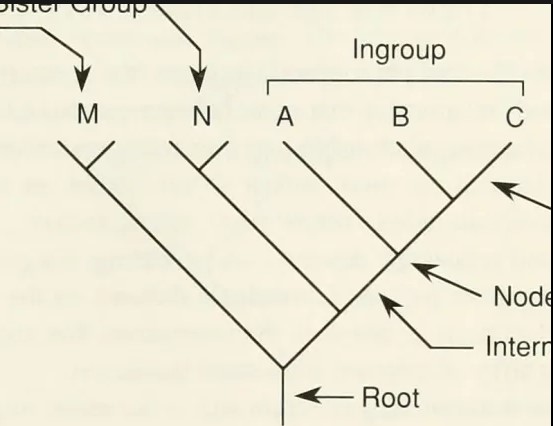In biology, there is an important distinction between an ingroup and an outgroup. Ingroup members are those who are related to one another and share similar characteristics, while outgroup members are those who are not related and often have different characteristics.
Definition of ingroup and outgroup

In biology, the terms “ingroup” and “outgroup” refer to the distinction between two groups of organisms. An ingroup is a group of organisms that share a common ancestor and are more closely related to each other than to members of the outgroup.
The concept of ingroup and outgroup is important for studying evolutionary relationships between species and for understanding the dynamics of species interactions.
Examples of ingroup and outgroup in nature

In biology, the terms “ingroup” and “outgroup” refer to the differences between two distinct groups of organisms. An ingroup is a group of organisms that are closely related to one another, such as a family or a species, while an outgroup is a group of organisms that are not related to the ingroup.
In nature, different species have distinct boundaries that help them stay separate and distinct. This is often seen in the form of territorial behavior, which helps an organism keep its “ingroup” safe from predators.
On the other hand, an outgroup is a group of organisms that is not related to the ingroup. This could be anything from a different species of animal, to a different genus, to a different family. The differences between ingroups and outgroups can be used to understand the relationships between different organisms in nature.
Difference between ingroup and outgroup

The difference between ingroup and outgroup can best be explained by looking at human biology. Ingroup is typically composed of people who have something in common, such as a culture, religion, language, or even a shared genetic trait.
Outgroup, on the other hand, is composed of people who are not part of the ingroup. For example, members of a different race or culture would be considered an outgroup. In biology, the difference between ingroup and outgroup is even more apparent.
Ingroup species are typically closely related, while outgroup species are more distantly related. This means that two organisms belonging to the same ingroup species are more likely to share common genetic traits, while two organisms belonging to different outgroup species will have fewer shared traits.
Benefits of ingroup and outgroup
The difference between an ingroup and an outgroup in biology is an important distinction to understand. An ingroup is a group of individuals that share a common identity, such as a species or a geographical location.
An outgroup is a group of individuals that do not share the same identity as the ingroup. In biology, these distinctions create a sense of belonging and can lead to certain benefits. For example, an ingroup can provide a sense of comfort and safety, while an outgroup can provide healthy competition and diversity.
By understanding the difference between an ingroup and an outgroup, we can better appreciate the importance of both and how each can benefit us.
The risks of ingroup and outgroup
In biology, the terms ‘ingroup’ and ‘outgroup’ refer to the differences between two different groups of organisms. In an ingroup, the members of the group have common characteristics that make them similar to each other. An outgroup, on the other hand, consists of members that do not share any characteristics with the ingroup.
An outgroup, on the other hand, consists of members that do not share any characteristics with the ingroup. This difference between the two groups can have a significant impact on the overall environment and the risks that are associated with them. For example, an outgroup can bring in new genetic material that can lead to competition between the two groups and can cause the ingroup to become endangered.
In addition, outgroups can also introduce diseases and parasites that can cause a decrease in the population of the ingroup. Therefore, it is important to be aware of the differences between ingroup and outgroup when studying biology.
Final Touch
In conclusion, the distinction between ingroup and outgroup in biology is an important concept to understand. Ingroup refers to individuals or groups that share a common identity, while outgroup refers to individuals or groups that are perceived as different.
Outgroup members are typically seen as outsiders and may be viewed with suspicion or hostility. Understanding the distinction between ingroup and outgroup can help to promote positive social relationships and reduce prejudice and discrimination.

